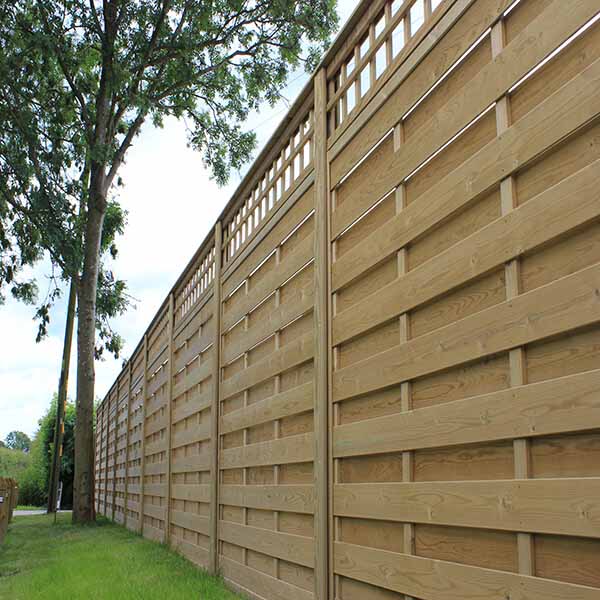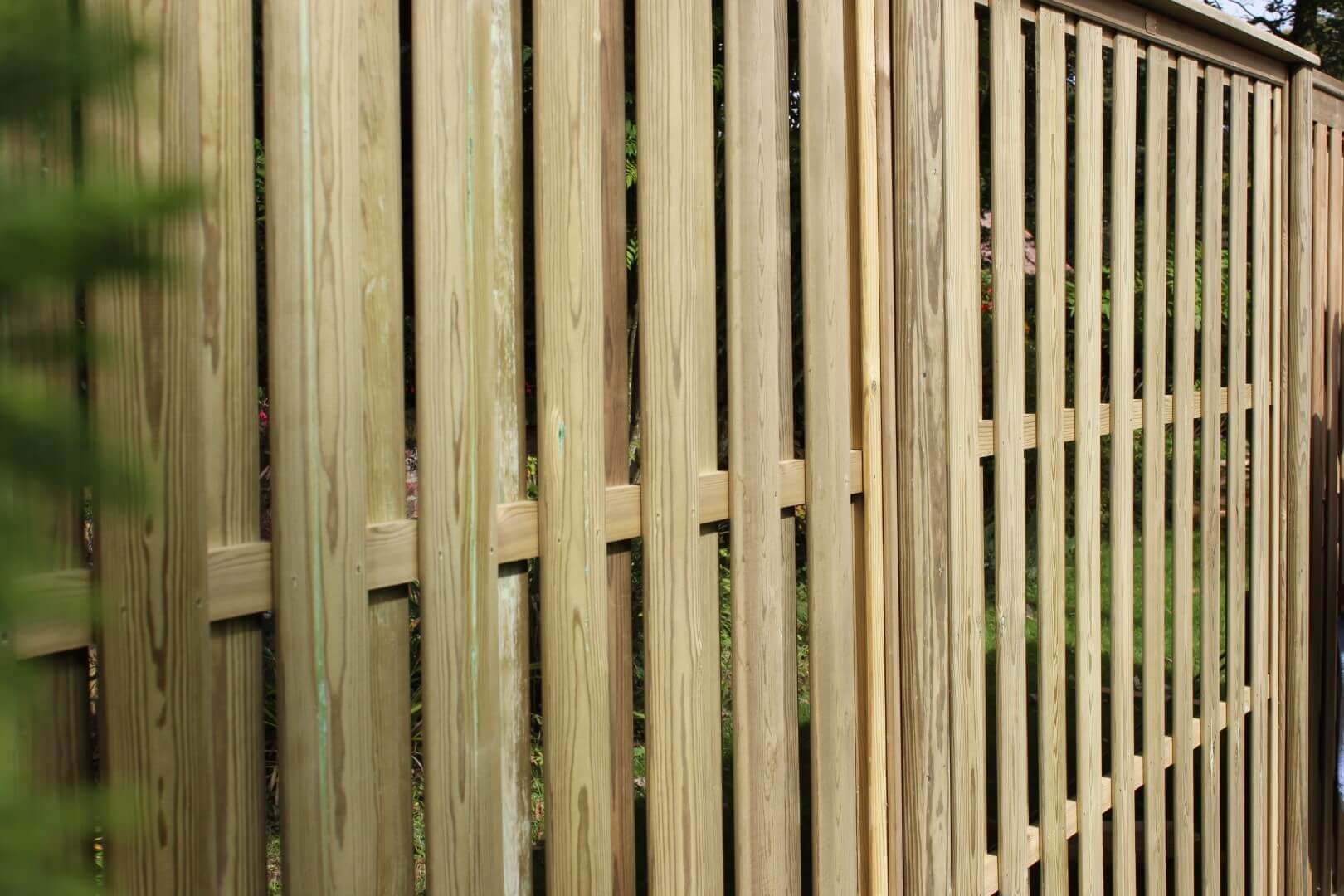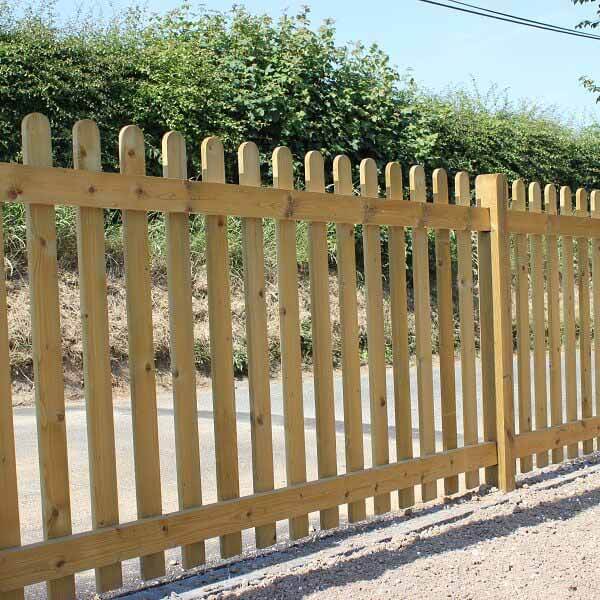24/01/2025 10:27 AM
Strong winds and storms can cause severe damage to a fence. Fencing which is intended for wind prone or exposed areas needs to be carefully chosen and installed, to ensure it is well equipped to stay secure in strong winds. Additionally, the frequency and intensity of storms has increased in recent years. We regularly see homeowners in need of a new fence after their own was storm damaged.
How to install a fence in a windy location
- Use heavy duty slotted posts. Heavy duty posts are thicker and therefore stronger than standard slotted posts. In areas of high winds, we recommend heavy duty posts to help support the fence panels and keep them upright.
- Choose longer fence posts and install them deeper into the ground. The deeper the fence post goes into the ground, the more support it can offer above ground. As standard, we recommend at least 600mm in ground, but in wind-prone areas posts should be installed even deeper.
- Screw fence panels to posts. This can only be achieved using timber fence panels and screwing those to timber or suitable metal posts. This will prevent the integrity of the post being affected if a fence panel is moving around in strong winds.
- Avoid concrete posts - they cause an annoying rattle as the fence panel moves around in the slot as it can’t be secured. When wind hits, the panel moves within the slot of the post, creating noise and damaging the panel over time. As they are not secured, fence panels can blow out of concrete posts in strong gusts.
- Use more post fixing mix. A solid foundation will provide adequate support for the fence post to keep itself and the fence panel upright under pressure from wind.
 Any combination of the above should greatly decrease the chances of fence failure in areas that are prone to strong winds. It is important to note that there is no single solution, and each environment will have its own conditions which may influence the most successful solution.
Any combination of the above should greatly decrease the chances of fence failure in areas that are prone to strong winds. It is important to note that there is no single solution, and each environment will have its own conditions which may influence the most successful solution.
To ensure you install a fence post correctly, please watch our installation video.
Best fencing for windy gardens
Below we explain the different terms you may see when looking for fencing: windproof, wind resistant, and wind resistance. By looking at fence panel designs which mention these in the descriptions, you give your fence a better chance at standing up to strong winds and storms. In wind, a solid fence panel with no gaps will act like a sail. Installed with the methods explained above, the installation is improved, but the type of fence panel can improve it even further. Semi-solid or slatted fence panels like Venetian or Hit and Miss have gaps that allow wind to filter through, reducing pressure on the panels and posts. These are worth considering if you are concerned about wind-proofing your fencing, and offer differing levels of privacy if that is also a concern.
What do windproof, wind resistant, and wind resistance mean?
All these 'wind' terms have slightly different meanings, so here is a quick outline:
Wind proof – Would be impervious to wind, no matter how strong or forceful the wind is. Be aware that without wind loading calculations (like those used for very tall commercial and acoustic fences), no garden fence can be truly 'wind proof'.
Wind resistant – The ability to resist the effects of wind with some air penetrating through.
Wind resistance – The scientific term for air resistance. The resistance that still air offers to movement, mostly pertaining to vehicles, but this also applies to stationary objects buffeted by winds and gales.

WIND RESISTANT FENCE POSTS
Fence posts are the most integral part of ensuring your fencing stays upright in windy conditions. We recommend timber or metal posts to allow you to secure fence panels to posts.
Timber fence posts
Strong timber posts that have been treated effectively for life in the ground will ensure fencing has the best chance at overcoming strong winds time after time.
Timber posts that are compromised by rot are weak and are usually the cause of fence failure. Opting for timber posts that have a long guarantee against rot and insect attack, will ensure the product has been properly protected and prepared to withstand inground conditions.
We recommend our vacuum-pressure treated heavy duty slotted Jakposts® for wind prone areas. They come in lengths of 2.70m, 3.30m, 3.60m, and 3.90m. For coastal areas that are a prone to high wind with potentially marshy ground, we suggest installing longer posts deeper into the ground to reach solid foundations.

Shorter fence panels - better for windy areas
Depending on the purpose of your fence or how friendly you are with your neighbours, a shorter fence may do a better job in areas with high winds. Shorter fence panels have less surface area and therefore create less resistance against the wind.
Many of our premium semi-solid fence panels are available in shorter variations including 0.91m or even 0.61m. This makes it easy to choose the design or style you prefer in a height that suits your garden.
WIND RESISTANT FRONT GARDEN FENCING
If you need a fence for demarcation purposes; around a front garden or the boundary of your land, various shorter fences provide less wind resistance whilst keeping a pleasant aesthetic. Post and rail fencing is commonly used to demarcate large boundaries while keeping countryside views open and enabling wind to pass through.

For front gardens, traditional style Palisade, Picket or Jaktop fencing allows wind to flow through and reduces the strain on the fence when strong winds occur, but also provides additional safety for pets or children. To increase privacy and security, our Hit and Miss fence panels are designed to allow air and light through the panel. They are framed around the outside for increased strength too and provide a modern option for front garden fencing for windy areas.
A rotting, weathered, or poorly maintained fence can lead to fence failure during storms and fierce winds. Therefore, it is crucial to choose products that have been correctly designed for the environment they will be in, properly installed, and efficiently treated with a long lifetime guarantee. Installation is a major part of the success of fencing in wind prone areas. We recommend using an experienced fence installer, like one of our Approved Installers.
Compare Semi Solid Fence Panels
Learn About Our Approved Installers
Related blogs
